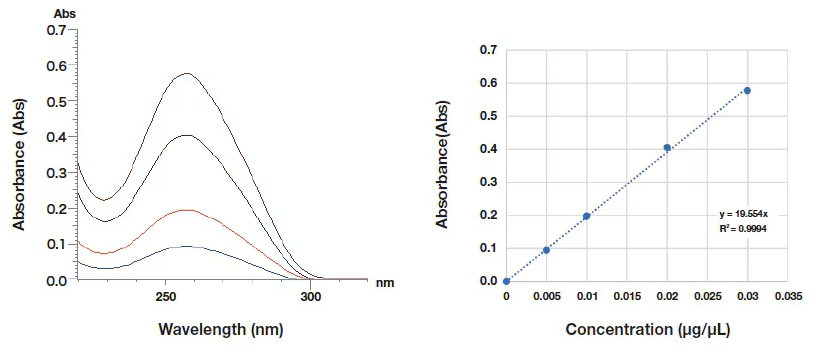
Double Beam Spectrophotometer
UH5200 / UH5210
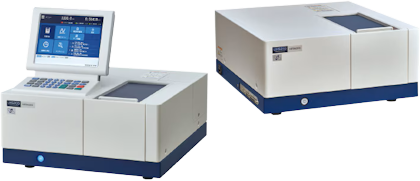
The UH5200 features a 10.4-inch backlit color LCD display with 800??600-pixel resolution - higher than the previous-generation U-2900 system - to allow detailed visualization of calibration curves and measured spectra. The layout of the display screen is unchanged from that of previous-generation instruments, offering users a familiar operating experience with enhanced readability thanks to a new graphic design. A dedicated keyboard allows accurate, worry-free input.
The UH5200 series lineup consists of the UH5200, a standalone instrument, and the UH5210, a PC-controlled instrument.
The UH5200 features a 10.4-inch backlit color LCD display with 800??600-pixel resolution - higher than the previous-generation U-2900 system???to allow detailed visualization of calibration curves and measured spectra. The layout of the display screen is unchanged from that of previous-generation instruments, offering users a familiar operating experience with enhanced readability thanks to a new graphic design. A dedicated keyboard allows accurate, worry-free input. (Figure 1)
The UH5210 is a fully PC-controlled instrument. Its control software is UV Solutions Plus, a new platform that is an update to the UV Solutions control software of the previous-generation U-2900 system with expanded functionality, including display of data lists and data-processing results in tabular form, report layouts, and performance validation (Figure 2). The UH5200 also offers the option of adding the UV Solutions Plus software platform to allow PC control.
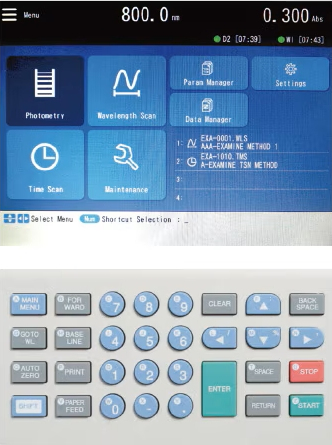
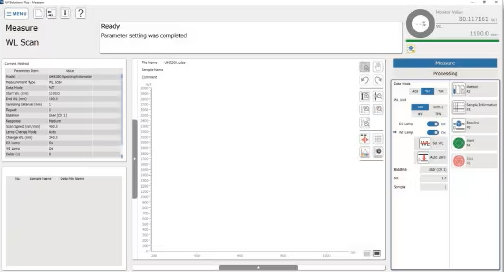
Basic performance: Reliability
The optical systems of UH5200 instruments use Seya-Namioka monochromators, a widely used type of monochromator based on a concave diffraction grating (Figure 3). Concave diffraction gratings serve both to focus and to disperse light, thus allowing optical systems to be implemented with fewer mirrors. Reducing the number of mirrors in a spectrophotometer not only reduces optical losses, but also shortens optical path lengths, yielding a brighter optical system. Hitachi's proprietary ruling engine technology for fabricating diffraction gratings enables bright, aberration-free optical systems. In addition, the use of a double-beam optical system???in which half-mirrors are used to split the optical path into two segments, compensating for variations in optical energy, including from the light source - ensures measurement stability over long periods of time.
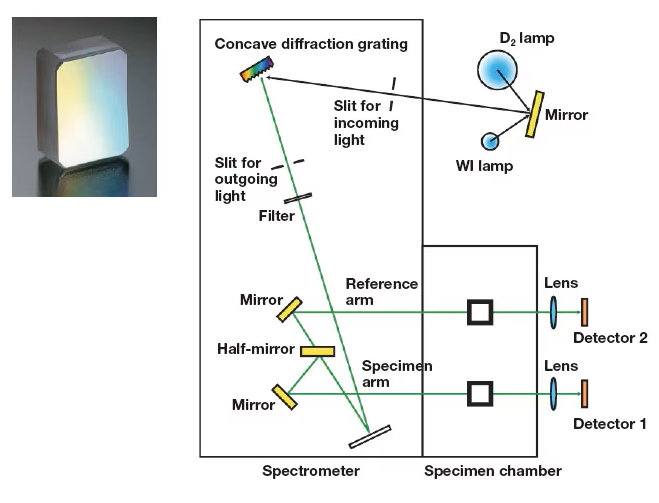
NEW FEATURES
1) New lamp controls designed for safety and environmental impact
Making accurate spectrophotometer measurements requires a lamp capable of stable operation for long periods of time. UH5200 series instruments are equipped with the capability to turn the lamp on and off automatically, thus avoiding unnecessary on-time. When the lamp is turned on, the instrument monitors its output and automatically notifies the operator when this output has stabilized, indicating that measurements may now begin. Also, as a new safety provision, the UH5200 series now incorporates a sensor to detect whether the lamp chamber is open or closed during the lamp-replacement process (Figure 4).
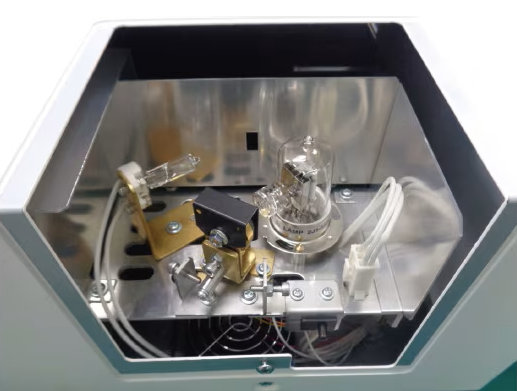
2) Support for bar-code readers in standalone configuration
UH5200 instruments provide USB ports for connecting external devices such as keyboards, bar-code readers, or thumb drives (Figure 5). Bar-code readers may be used to streamline the process of specifying names for measurement specimens, while thumb drives (USB memory sticks) may be used for data storage.

Environmental regulations designed to protect the health of individuals affected by pollution of public bodies of water, as well as environmental regulations governing pollution in ground water, have tightened the permissible threshold for hexavalent chromium from 0.05 mg/L to 0.02 mg/L. In general, environmental regulations protecting human health specify that measurements are to be made using absorption cells with an optical path length of 50 mm. Here we present measurements of hexavalent chromium using an UH5200 equipped with a custom-made auto-sipper compatible with 50-mm optical-path-length cells. The autosipper improves measurement throughput - and, when combined with an autosampler to automate the mounting of measurement specimens in the instrument, can significantly reduce the effort required from human operators.
Figure 6 shows absorption spectra obtained in wavelength-scan mode (left) and a calibration curve obtained in photometry mode (right). For a peak absorption wavelength of 542 nm, the calibration curve over the range 0-400 ??g/L exhibits a perfect linear relationship with a correlation coefficient R=1.000.
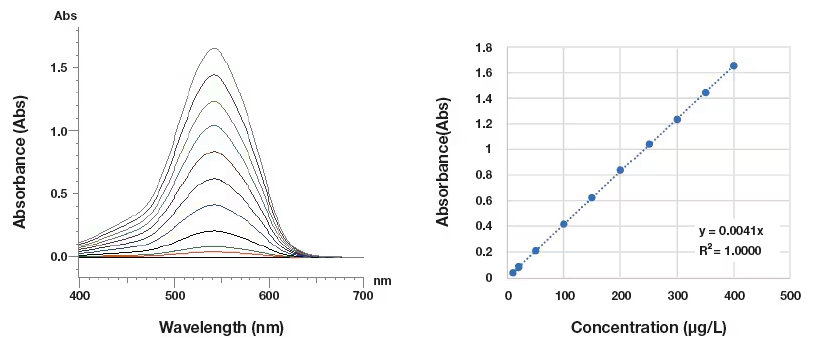
DNA exhibits an absorption peak at 260 nm, a nd the DNA concentration of a specimen may be determined by measuring the absorbance at this wavelength. This allows the use of spectrophotometers for quantitative analysis of DNA extracted from test bodies. Figure 7 shows absorption spectra for specimens prepared with various lambda-DNA concentrations (left) and a calibration curve for quantitative analysis (right), measured using a 50 ??L cell. We obtain high-quality spectra with absorption peaks near 260 nm. For measurement of trace specimens, the optional microsample cell may be used to measure specimen volumes as small as 1.5 ??L.
